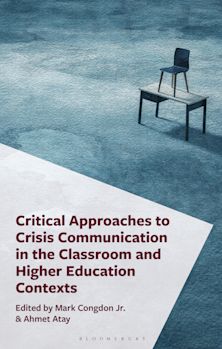Creating Restorative Justice
A Communication Perspective of Justice, Restoration, and Community
Creating Restorative Justice
A Communication Perspective of Justice, Restoration, and Community
Description
Discussion of the histories, meanings, and assumptions of restorative justice have enriched the development of its theory, research, and practices. While some of this work has addressed the role of communication, the treatment of communication within restorative justice remains rather under-developed. Communication plays a central role in processes of restoration and justice and a constitutive role in making restorative justice what it is. In Creating Restorative Justice: A Communication Perspective of Justice, Restoration, and Community, Gregory D. PaulandIan M. Borton argue that by centering communication in restorative justice as it occurs in various contexts (from families, to schools, to communities), we can simultaneously deepen our understanding, enrich our practice, and amplify our study of restoration and justice. From a communication perspective, restorative contexts both use and are created by the communication present. Any outcomes from restorative processes are thus the product of the communication both within and between restorative practices’ participants. As the world addresses the challenges presented by injustice, inequality, and insecurity, it is incumbent we expand our understanding of restorative processes to account for the vital role of communication.
Table of Contents
Acknowledgments
Introduction
Chapter 1: A Communication Perspective of Restorative Justice
Chapter 2: The Return of RJ
Chapter 3: The Restorative Family
Chapter 4: RJ in American Schools
Chapter 5: Constituting Community through Restorative Justice
Chapter 6: Digital RJ
Chapter 7: Studying Restorative Justice
About the Authors
Product details
| Published | 07 Apr 2021 |
|---|---|
| Format | Ebook (PDF) |
| Edition | 1st |
| Extent | 1 |
| ISBN | 9781978753426 |
| Imprint | Lexington Books |
| Illustrations | 1 tables; |
| Publisher | Bloomsbury Publishing |
Reviews

ONLINE RESOURCES
Bloomsbury Collections
This book is available on Bloomsbury Collections where your library has access.


































